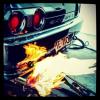Plumbing Back Atmo Bov's
Announcements
-
Similar Content
-
Latest Posts
-
By Murray_Calavera · Posted
I'm only really familiar with the R33 setup, the factory filter is very much an encourage fuel pick up thingo. The factory pump sits about half way down into the tank and the sock runs down into the bottom of the tank. Mounting an aftermarket pump in the factory location with the typical tiny Walbro filter, I had huge fuel surge issues once the fuel level dropped below 50%. -
Hi Gent, Got my r34 GTT 1999 ,wondering if anyone has a stock airbox with snorkel? currenly it has a pod filter which im planning to remove and install the stock part, as this needs to go to vic road for inspection. Appreciate your assistance.
-
Yeah, I still dunno. The size of the sock should only matter if it is blocked. It is, after all, a filter rather than a "thing to encourage fuel pickup". He has modded the original so that it is now down on the floor, so it's not physically the same as in the original complaint, yet does the same thing. I therefore lean to the problem being somewhere else. Sticking some dynomat on there is a worthwhile experiment, but I'd put $10 on it not fixing the problem.
-
I don't remember hearing it before the coolant and bonnet escapade. I wonder if a couple of pulleys being filled with hot coolant was not to their liking?
-
By DraftySquash · Posted
Took her down to be the wedding car ❤️ and I love the people’s advice 😂
-







1.thumb.png.36afd656b26d55f5d425fc76e21561f2.png)
Recommended Posts
Create an account or sign in to comment
You need to be a member in order to leave a comment
Create an account
Sign up for a new account in our community. It's easy!
Register a new accountSign in
Already have an account? Sign in here.
Sign In Now